Are you feeling anxious about unexpected expenses? You're not aloneâmany people find themselves in a bind when financial surprises pop up. That's where an emergency fund comes in, acting as a safety net for those unplanned costs. If you're curious about how to build your own emergency fund and why it's crucial, we invite you to read more!
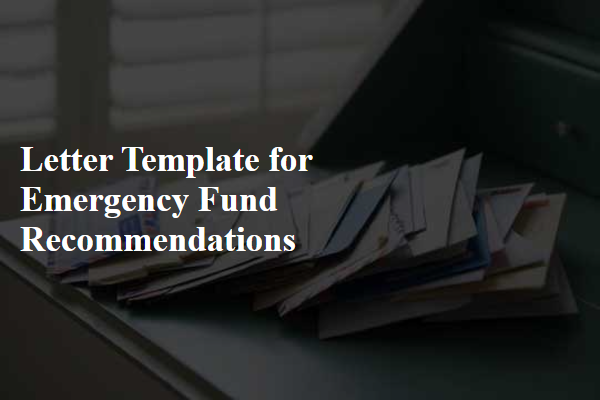
Purpose and Importance of Emergency Fund
An emergency fund is a crucial financial safety net, typically consisting of three to six months' worth of living expenses, designed to cover unexpected events such as job loss, medical emergencies, or urgent home repairs. Building this fund in easily accessible accounts, like high-yield savings accounts, ensures quick retrieval during crises. A well-established emergency fund can alleviate financial stress and provide peace of mind, allowing individuals to focus on recovery and problem-solving without the added burden of financial instability. The significance of this fund lies in its ability to prevent individuals from relying on high-interest debt, such as credit cards, during emergencies, ultimately supporting long-term financial health and stability.
Target Savings Amount
Establishing an emergency fund is crucial for financial security, particularly in unpredictable situations like job loss or medical emergencies. Financial experts recommend saving three to six months' worth of living expenses to create a robust safety net. For instance, if monthly expenses total $3,000, a target savings amount would range from $9,000 to $18,000. This fund should be liquid, easily accessible, and ideally housed in a high-yield savings account or money market account to ensure the funds grow while remaining available in times of need. Regular contributions, even small amounts, can significantly enhance the fund over time, providing peace of mind and stability.
Savings Schedule or Plan
Creating an emergency fund is essential for financial stability, allowing individuals to address unforeseen expenses without accumulating debt. Aiming for three to six months' worth of living expenses is often recommended, equating to approximately $15,000 to $30,000 for average households in the United States based on a monthly budget of $5,000. Establishing a dedicated savings account, such as a high-yield savings account, can help maximize interest, currently averaging around 3% APY in various banks as of 2023. Implementing a savings schedule, such as automatically transferring funds each month, can foster discipline. For example, setting aside $500 a month enables the accumulation of $6,000 in a year. Additionally, reviewing and adjusting contributions based on changing circumstances, such as income increases or decreases, ensures continued progress in building this safety net. Engaging with a financial advisor can provide personalized strategies tailored to unique financial situations, enhancing overall effectiveness in achieving emergency fund goals.
Accessible and Safe Storage Options
Creating an emergency fund requires accessible and safe storage options to ensure financial security during unforeseen events. High-yield savings accounts, offered by numerous banks, provide liquidity while generating interest (averaging around 0.5% to 2.0% APY). Another option includes money market accounts, typically maintaining higher interest rates but requiring a minimum balance, often around $1,000. Certificate of deposits (CDs), while less flexible due to fixed terms (ranging from 6 months to 5 years), can yield higher returns, averaging 1.0% to 3.0% APY. For immediate access, consider utilizing cash in a safe, preferably fireproof, kept in a secure location, such as a home safe or rental safety deposit box. Diversifying storage methods helps balance accessibility and security, ensuring the emergency fund remains protected while ready for use in case of unexpected expenses like medical emergencies or job loss.
Review and Adjustments Regularly
Emergency funds serve as financial safety nets for individuals, ensuring preparedness for unforeseen circumstances such as job loss, medical emergencies, or urgent home repairs. The recommended minimum is three to six months of essential living expenses, including rent, utilities, and groceries. Periodic reviews of the fund's adequacy are crucial, ideally every six months or following significant life changes like marriage or a new job. These adjustments might accommodate rising costs of living, inflation rates, or changes in income. Additionally, ensuring the fund is held in a liquid savings account, such as a high-yield savings account, can provide quick access in emergencies while still earning some interest.

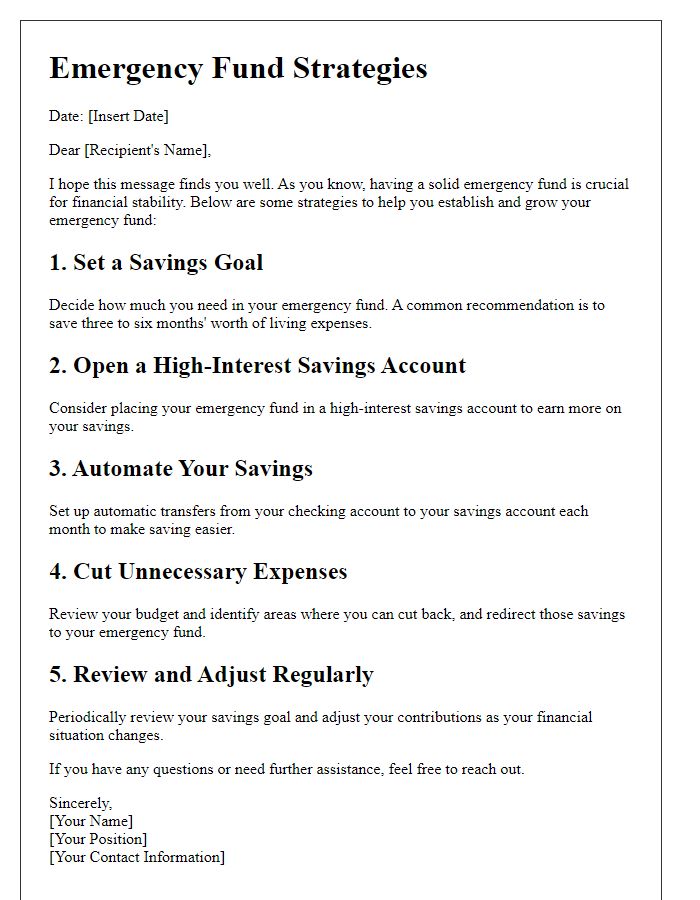
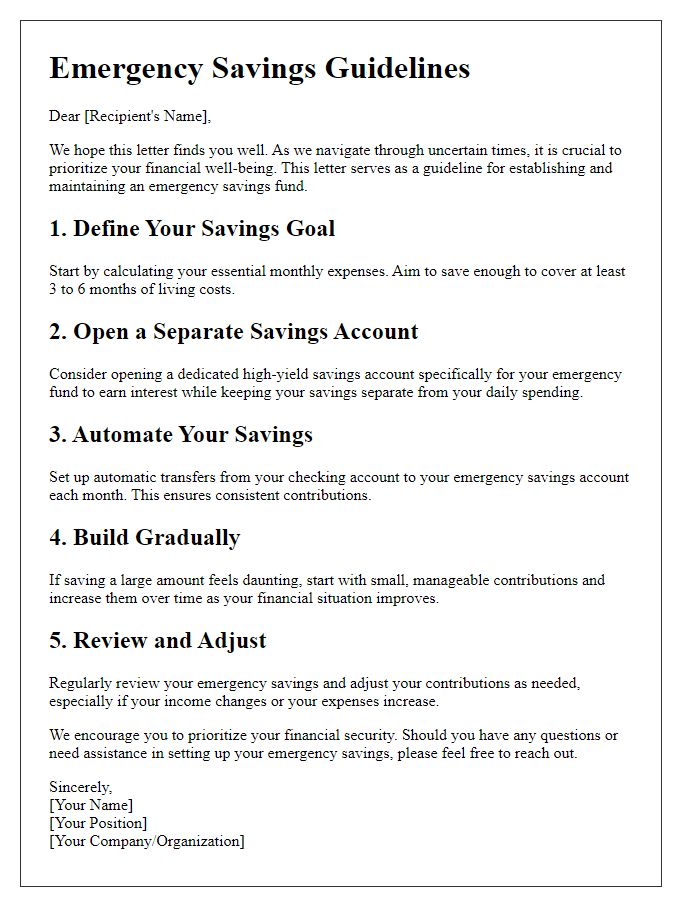
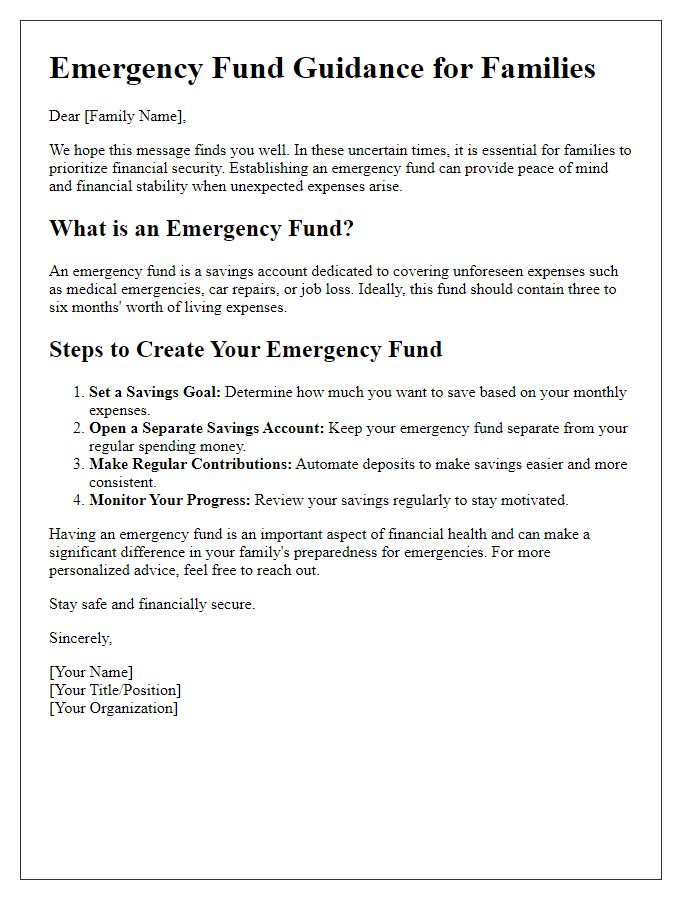
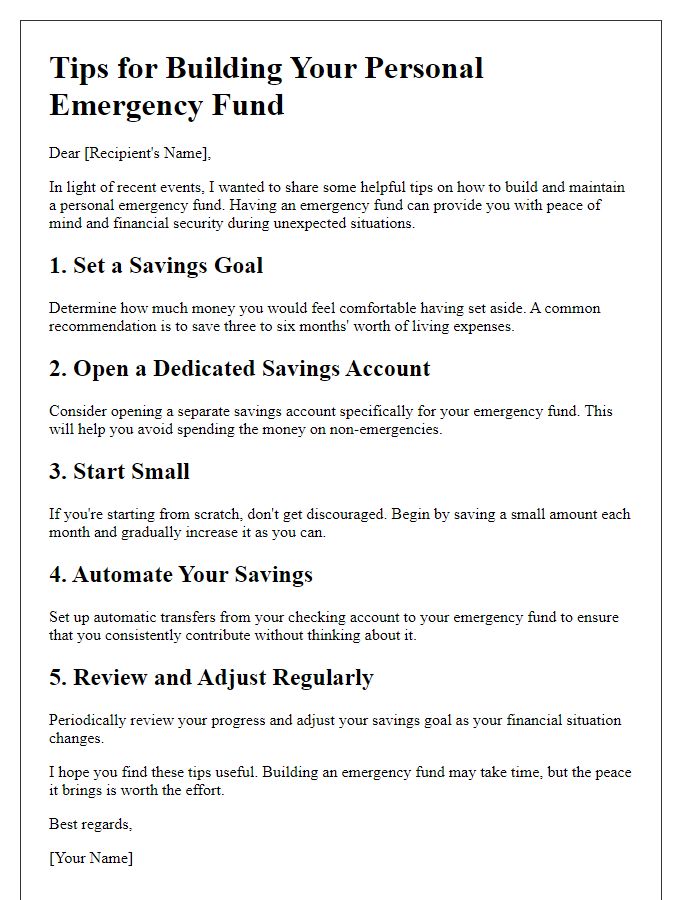
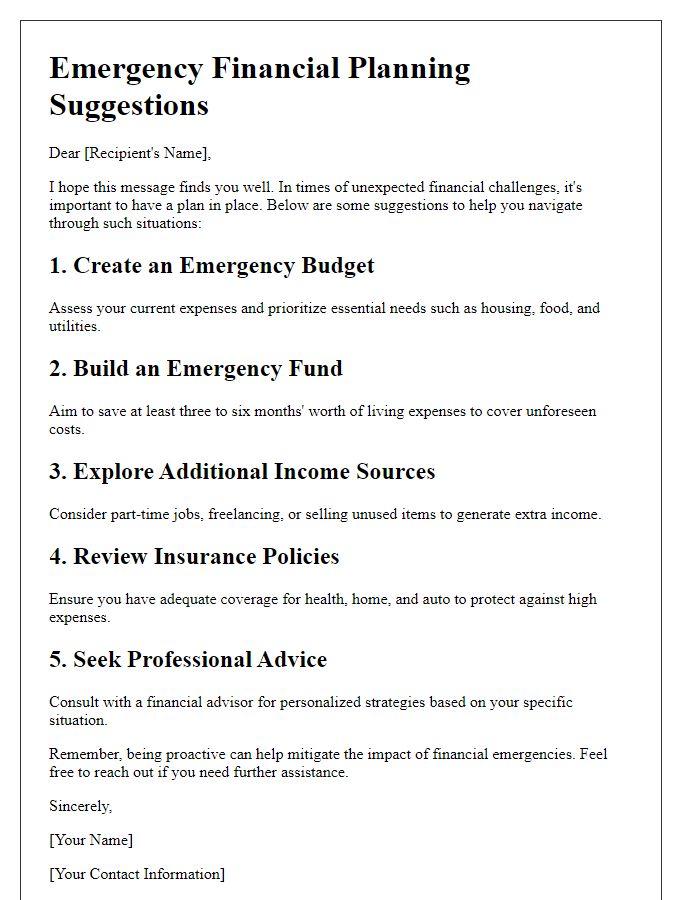
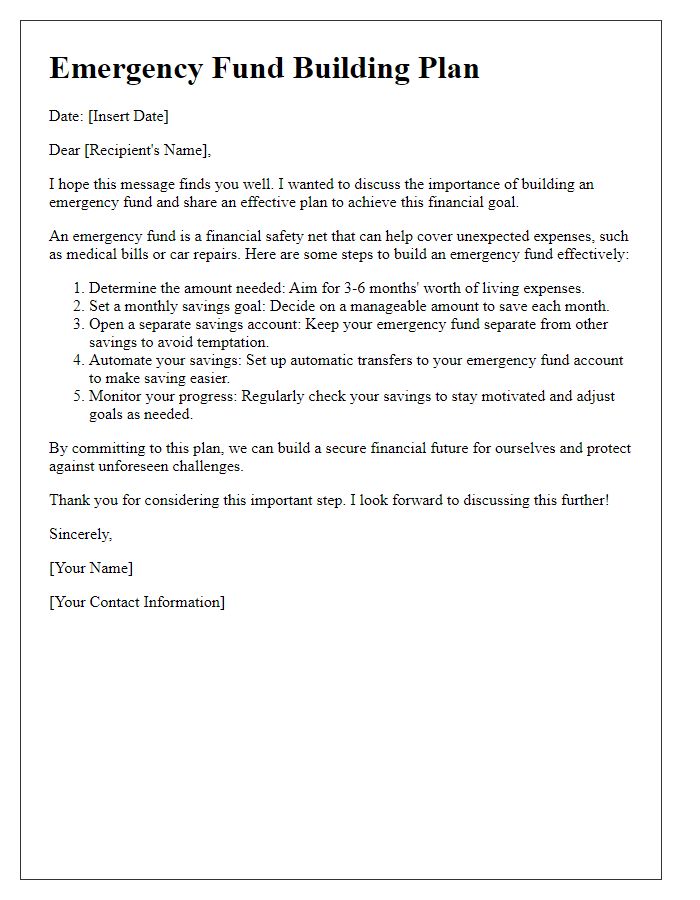
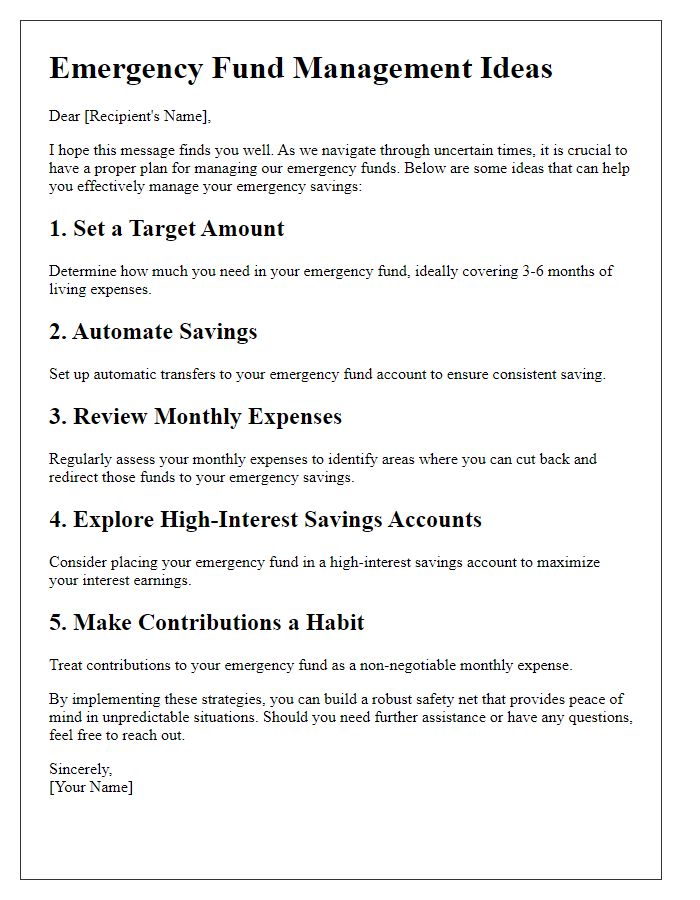
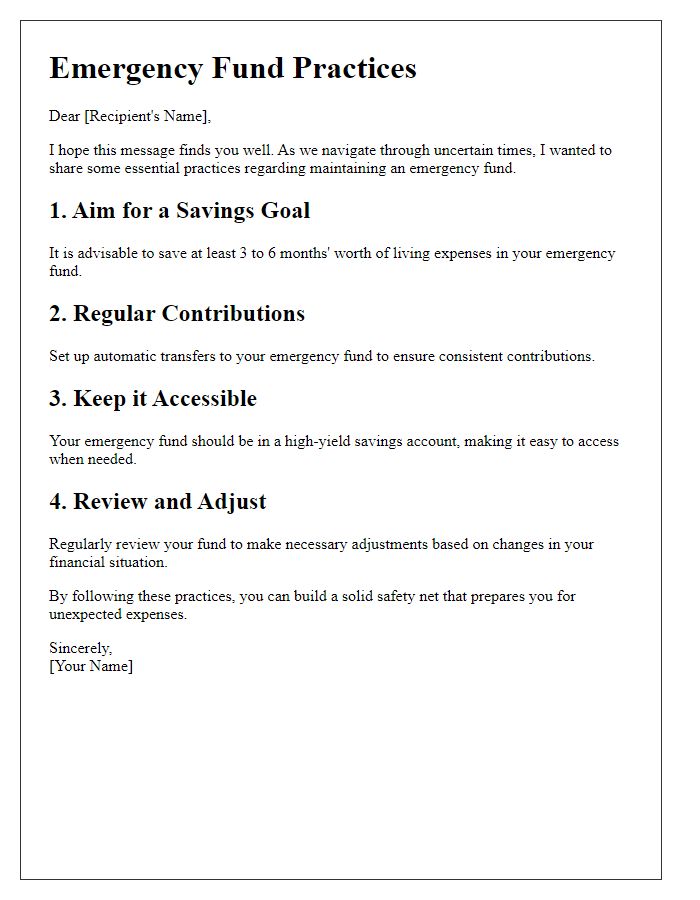
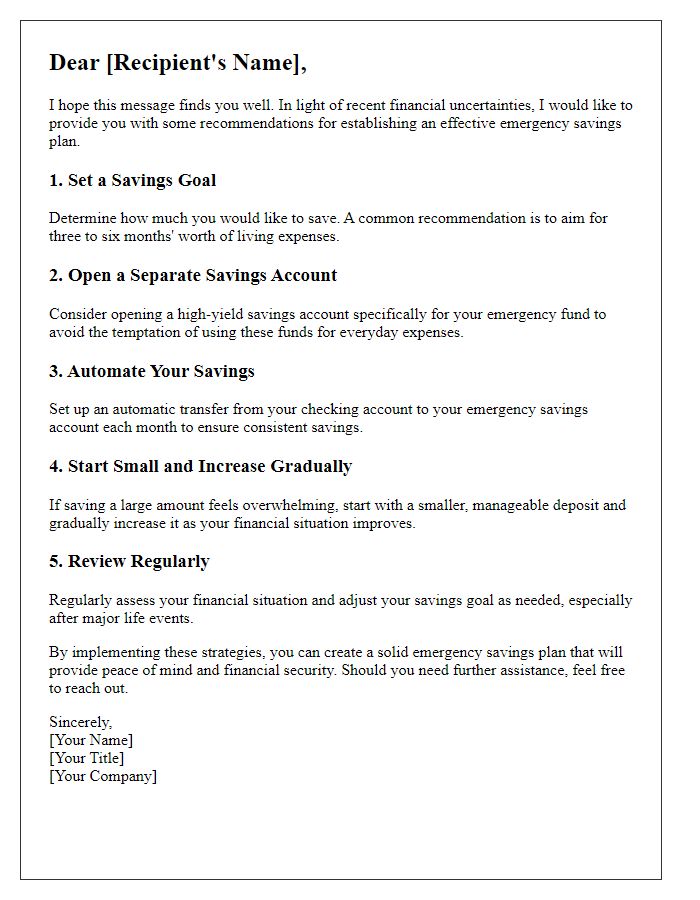
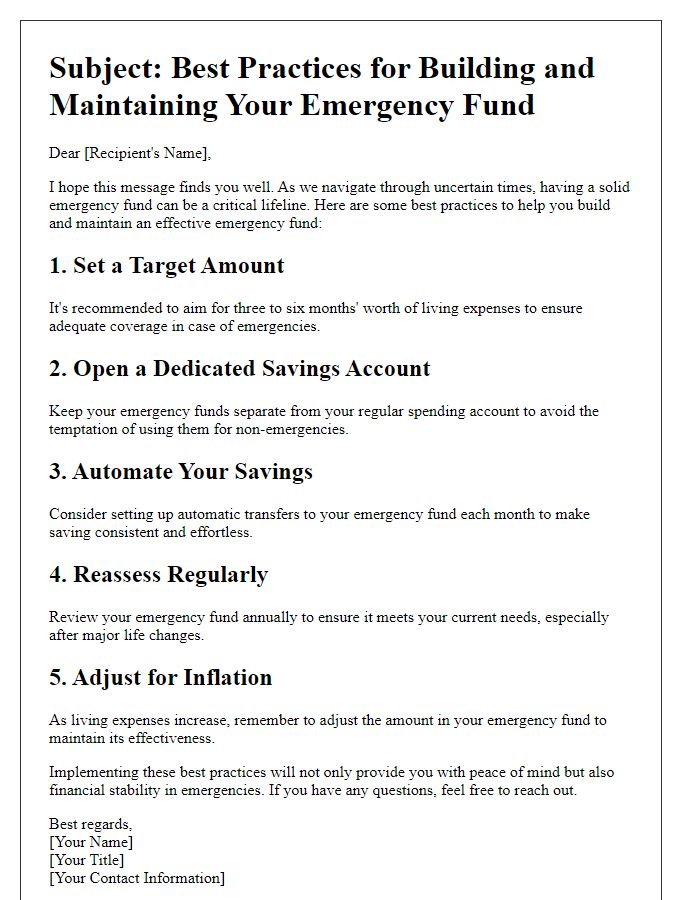


Comments